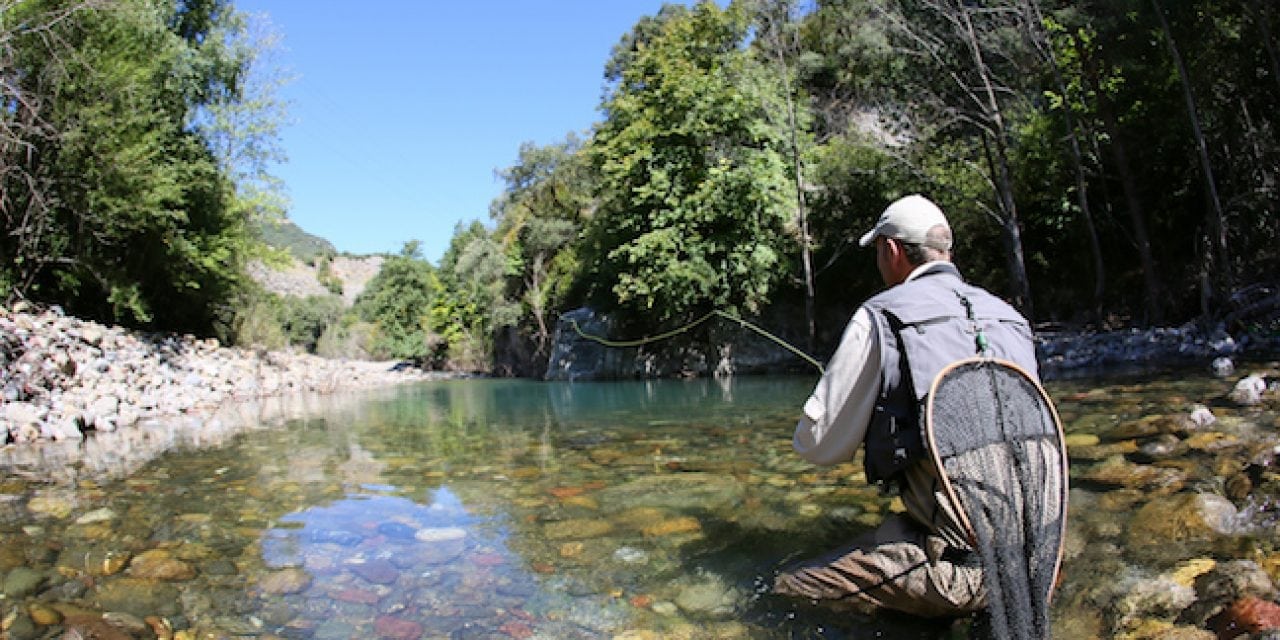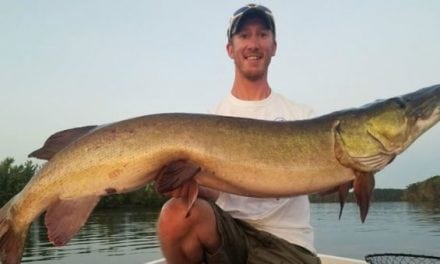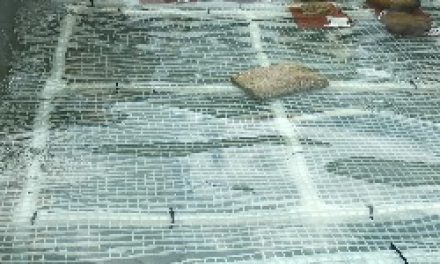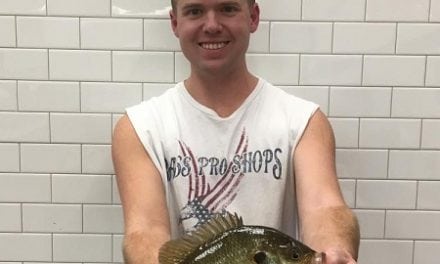These tips will help when fall trout fishing conditions are tough.
I once asked a friend when would be a more difficult time to fish for trout than in the fall when streams are typically low, clear, and somewhat warm.
His response was something to the effect of how about a blustery, cold January night when a favorite stream is frozen solid.
Obviously, my friend’s statement is hyperbole, but no doubt exists that autumn angling is often perplexing. Luckily, successful strategies do exist.
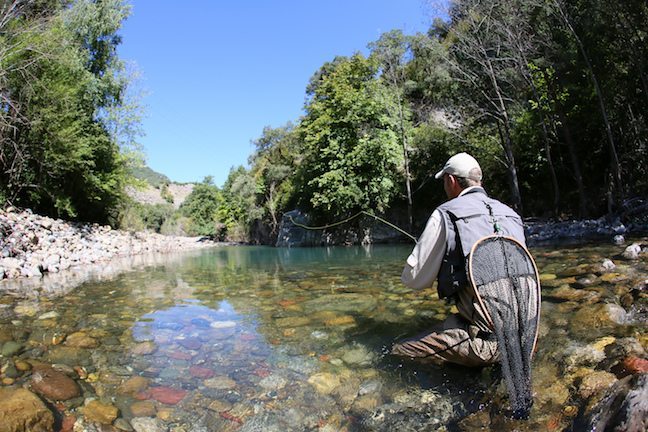
Stealth can be a critical factor for success in the fall. (Shutterstock image)
FINESSE FISHING ON TOP
James Hancock grew up fishing for trout in the East, then moved to the West and became a fishing and hunting guide, and now has moved back to the East and still, of course, passionately pursues trout.
I asked him to offer fall strategies that would perform well for anglers in both parts of the country.
“For low, clear water, the first thing I would try would be to work attractor flies like the Adams, Royal Wulff, and Elk Hair Caddis,” he said. “The size could be anywhere from 12s and 14s to 16s and 18s depending on the size of the predominant hatches. For these conditions, I’m more interested in making a subtle, dainty cast to spooky fish than trying to precisely match the hatch. If I have to go to the smaller sizes, I’ll want to use something like a Parachute Adams just for the visibility factor.”
If this approach fails to bring satisfactory results — perhaps because the trout may be refusing to rise to the surface — then Hancock turns to the dry fly and dropper rig.
He’ll opt for any stimulator-type pattern and for the dropper, rely on a size 16 or 18 nymph such as a Pheasant Tail or Hare’s Ear.
Of course, the depth of the water will have a great deal to do with the length of the dropper. Hancock adds he doesn’t expect the dry fly to receive strikes — although occasionally that occurs — as its main function is to serve as a strike indicator.
GO FAST BELOW THE SURFACE
If these two approaches don’t work or lose their effectiveness after a while, Hancock still has another option. However, he readily admits that this third approach is not normally as productive as the first two ones.
“I will go subsurface and I will retrieve the pattern super-fast,” he said. “But this pattern comes with qualifications. It won’t work in still water, extremely clear or shallow water, or under bright sun — the fly will likely spook any trout it passes by under those conditions.
“When this fly will work, though — and I prefer a streamer or any generic minnow imitation — is early or late in the day, during cloudy conditions, or in choppy water that’s moving swiftly. Fish a streamer (in low-water conditions of fall) any other time and you’re likely to be wasting your time.”
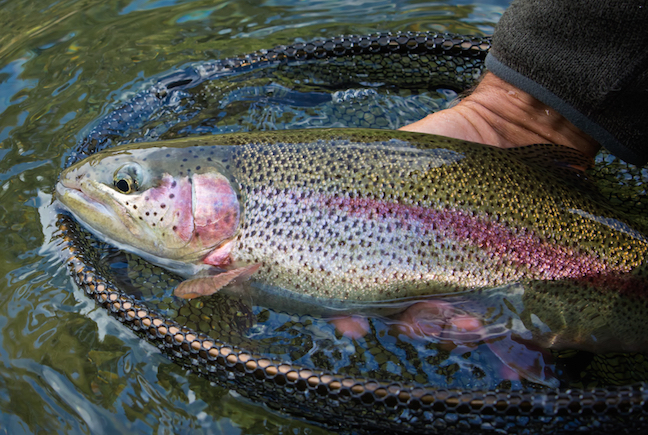
Autumn trout angling is often perplexing. Luckily, successful strategies do exist. (Shutterstock image)
LURE OPTIONS
Last year, I float-fished a small stream that was suffering from low, clear water. A friend and I spotted a beautiful 20-inch rainbow that was finning in a riffle and apparently feeding on some sort of aquatic insects.
My buddy decided to try to match what he thought the trout was feeding on and had his various offerings rejected time after time while I watched and rooted for him to do battle with the behemoth. Finally, my friend gave up the quest and we moved on down the stream.
It was about then I realized the time might be right for me to try a gambit that has worked for me since I was a kid fishing for trout on a river near my home.
My friend and I had both fly and spin fishing gear in his canoe, so I took up my medium-action spinning outfit and tied on a Size 7 Floating/Diving Rapala Original Minnow.
Expressing mystification, my friend further teased me about my lure choice, claiming this was a time when a subtle presentation was required. He was also perplexed when I was content to paddle and let him make all the casts to potential trout lairs.
But when we came to a riffle about 10 yards long and 3 feet deep, I asked if I could make the first three casts. He agreed.
I cast downstream above the run, then straightaway began furiously ripping the Rapala into and through the run. Almost immediately, a large rainbow flashed at the artificial but missed it.
On the second cast, I again “churned” the minnow imitation through the run and this time, the rainbow — or another one of similar size — slammed the Rapala and after a prolonged battle, I was able to land the fish.
I then made two more casts and with no further strikes or “flashes,” I announced that it was time to move on. I ended up doing battle with a number of good sized trout that day — all caught on the same lure and in the same type of water. This anecdote leads to a few relevant points.
- First, I can’t emphasize enough that a speedy, erratic retrieve with lots of jerks and very short snappy pauses is the key to this pattern.
- Second, don’t make more than three casts after you have last caught a fish — or three casts total if you don’t receive a strike or a rise/follow/flash. The fish are either going to hit the lure or not early on — patience is not a virtue with this technique.
- For this pattern to work, active trout must be finning swift, choppy water. Ripping a Rapala, for instance, through a clear pool on an autumn day is useless.
Whether you are fishing a lure or something else, sometimes you will notice a pattern in what kind of water is holding trout (or the trout that are feeding). Sometimes in cases like that, to catch the most fish on a stream your best bet is to move rapidly from one hole that meets the habitat criteria to the next one that does, even if it means you don’t fish the stretches in between as thoroughly.
LIVE BAIT OPTIONS
A number of years ago, one of my best fly-fishing friends confessed he had been known to “slip the trout a minnow” on a few occasions, specifically when he was angling for stocked fish when the water was low and clear. After all, he commented, what’s wrong with taking a few stockers home for the pan?
Come autumn, the old “slip a trout a minnow” gambit is well worth trying, and as my friend pointed out, especially for stocked fish. Another buddy of mine is strictly a spin fisherman, and his go-to trout bait (not only in the fall but also throughout the year) is a large, lively nightcrawler or worm impaled on a light wire hook and cast weightless.
While wading, both of these acquaintances cast their preferred baits upstream and tight-line them back with the current. They also both prefer medium light spinning outfits with 4-pound-test mono and use a snap swivel to avoid line twist.
Crickets and grasshoppers can also work very well, especially in areas where either are present naturally. Cold in the fall eventually kills grasshopper adults, but before they are all gone, the cold makes them slow and clumsy. They fall into the water frequently, and for trout they are a feast.
A STEALTH APPROACH
Regardless of whether you prefer using flies, lures, or live bait for autumn trout, a stealthy approach is required for fishing the low, clear streams of autumn.
That means while wade fishing, we should always work our way upstream, gently slide our feet over the bottom, and place a premium on long casts where our offerings dimple the surface instead of making a splash.
If a stream is such that it can be paddled, the long-cast gambit is even more important, as it’s much easier to make noise while we’re in a boat than when wading. Often a kayak is a better option than a canoe because of the former’s smaller size and better maneuverability in tight places.
I had much rather fish for trout in the spring, summer, and winter than in the autumn. I often struggle mightily when my local streams are low and clear.
But options do exist for us to experience satisfactory outings; after all, many times it only seems that the trout have all disappeared. In reality, success is still very possible.
The post Go High and Fast for Fall Trout Fishing appeared first on Game & Fish.

